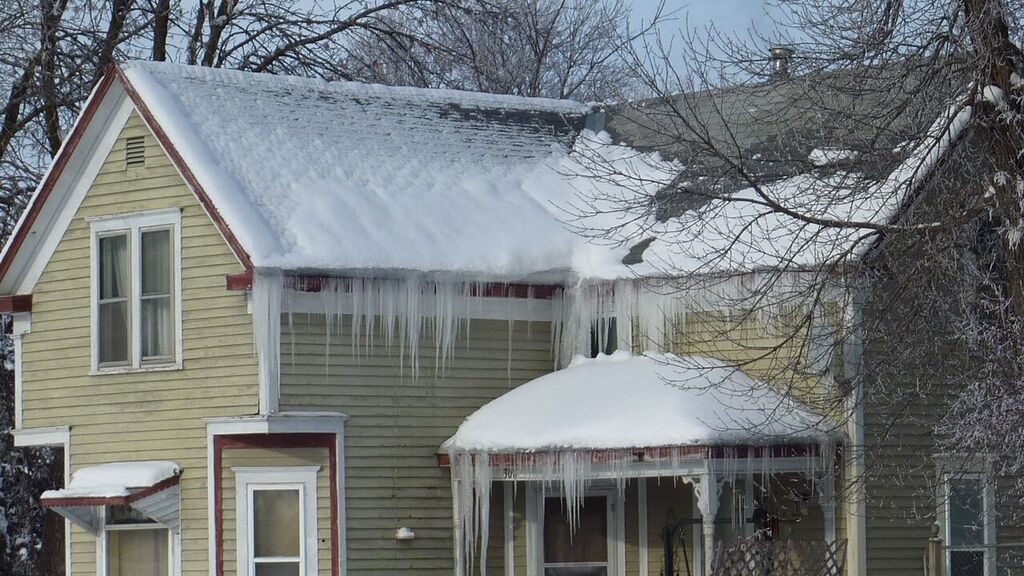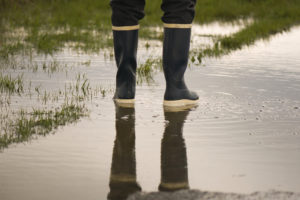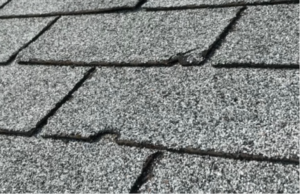I find that homeowners often confuse natural melt/freeze ice build-up with a systemic ice dam problem in their home. I also often hear people say things like “ice dams cannot be stopped in Minnesota” or “nature causes ice dams, you cannot fix Mother Nature.” This also leads me to the conclusion people need to learn to differentiate between the two occurrences.
Early February provided some unusual weather here in Minnesota. Temperatures have fluctuated between dry, extremely cold days to days with weather near or just above freezing with a lot of moisture in the air. We have seen a lot of natural ice build-up and several cases of hoarfrost which is less common in Minnesota due to dry weather in the winter.
Hoarfrost
Hoarfrost is defined: “A grayish-white crystalline deposit of frozen water vapor formed in clear still weather on vegetation, fences, etc.” Occasionally we wake up to this phenomenon and see these crystalline deposits on trees, fences, etc. You probably notice it mostly on trees.
You might wonder how this affects my home. With high humidity in the air, condensation can occur in areas and freeze. We often see this happen on plumbing stacks on a roof. There are two conclusions when we find this issue; either it’s a one-time occurrence (hoarfrost), or it’s a systemic problem caused by condensation coming from the plumbing stack.
Differentiating between the two is essential. If the plumbing stacks were installed improperly, the issue should be corrected. We find that often they are cut too high off the roof elevation (more than 12”), and freezing will occur due to the install. This should be corrected immediately. However even when properly installed the plumbing vent may still freeze due to the moisture in the air (hoarfrost), this is a “one-time” occurrence or something that will happen infrequently and while clearing the ice is advised, there is not a problem that needs to be addressed.
Natural Ice Build-up vs. Ice Dams
We receive a handful of phone calls when the weather fluctuates between near or above freezing during the day and drops below freezing at night. Most homeowners are concerned due to icicles forming on the eave or visible ice on the roof. Again it is crucial to differentiate between Mother Nature and an ongoing problem with heat loss in your attic space.
Ice Dams form due to heat loss in the attic along with improper ventilation. Attic bypass often allows warm air from the home into the attic and in turn, it warms the roof deck. This melts the snow on the roof when the melt reaches the cold eave (overhang) it then freezes. When there is enough ice built up, and it reaches the warm area on the roof, water builds up behind the ice, working its way uphill and will often cause leaks in the attic. This can lead to problems such as leaks, mold, warped roof deck and deterioration of shingles. Also, heat loss and bypass lead to other attic issues, most notably moisture issues. I’ll do a whole blog about this in the future, stay tuned!
Even if all your heat loss is stopped and your ventilation is performing, you can still have some ice form on your roof have. We see this happen with or without gutters, although more often when gutters are present. When it snows, and either warms up near or above freezing during the day or the sun shines on the roof during the day and then at night the temperature drops, we see natural ice forming on roofs. The most important distinction to make here is that there is no water sitting behind the ice or working its way uphill on the roof. Thus there is no problem with your attic. Again, it’s ok to have a little ice on your eave or a few icicles as long as your attic is performing.

A saying that we repeat a lot around our office is that “gutters are a double-edged sword.” While they do help move roof water away from the foundation of your home, they do enhance the natural ice build-up on a roof eave. Gutters along with the overhang are cold, so naturally, they form ice in the winter. Gutters are often necessary to move roof water; this only reinforces the need to insulate and ventilate your attic space properly.
Conclusion
While in most cases we still advise you have a professional inspect any potential issue, it is necessary to understand the difference between natural ice and ice formed from strange occurrences in your home, namely heat loss. If your attic space is sealed and there is proper ventilation in your attic a little ice can be expected from time to time, but if you see large amounts of ice or what you feel are ice dams, you should have a professional inspect your attic space and get a recommendation on how to remediate these issues.



